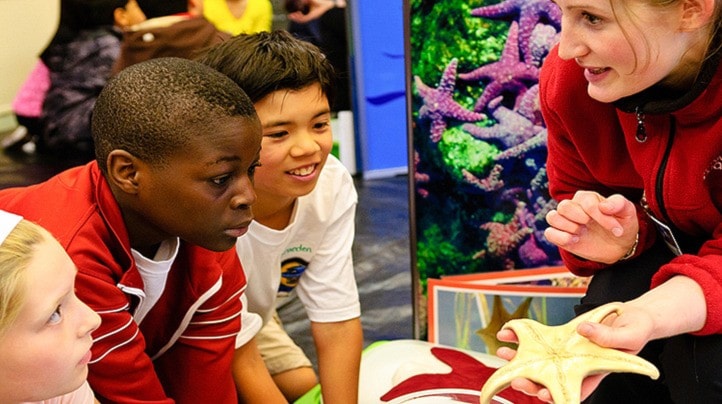The Vancouver Aquarium’s mobile education program, AquaVan, has started a two-week tour in the Interior, and will be finishing off with stops at David Stoddart School in Clinton on June 2 and Cache Creek Elementary on June 3.
The van is filled with displays, exhibits, and “lots of creatures that can be touched,” says Alexis Brown, Communications Advisor for the Vancouver Aquarium Marine Science Centre. These creatures include sea stars and sea urchins, which are always popular. “It’s great for kids who aren’t on the coast,” says Brown. “These aren’t exactly in your back yard.”
Educators who travel with the van set up displays and pools in the participating schools, giving students a hands-on experience. “The kids are very excited when we start to pull out live animals,” says Catriona Wilson, who manages the AquaVan. “One of the most common questions we get is ‘Are they alive?’ And we get kids trying to taste the water, because they don’t believe it’s salty.”
The programs offered by the AquaVan are curriculum-focused and tied to the aquarium’s conservation initiatives. This year also sees a focus on Canada’s north, with students able to interact with exhibits that include a polar bear fur and skull, an Arctic fox fur, a humpback whale rib, and shark teeth. “Those are always popular,” laughs Wilson.
The educators will also look at animals that are hunters: who is food for whom, and how the animals find their food. “We talk about the food chain a lot.” Wilson says that while the program is more or less the same for all the students, it is delivered in a way that is appropriate for the grades in question.
A maximum of 45 students can be accommodated in an hour, which is one reason Wilson likes taking the AquaVan to smaller schools where students can have more one-on-one interaction with the educators and the exhibits. “The sea stars are always popular,” says Wilson. “The kids can’t believe this is happening.”
Since its inception in 1994, the AquaVan has reached more than 400,000 students, and spends 10 to 12 weeks on the road every year. “It’s a way for children to get interested in, and learn more about, the natural world around them,” says Brown. “They get to see these creatures up close and personal in a familiar space.”
